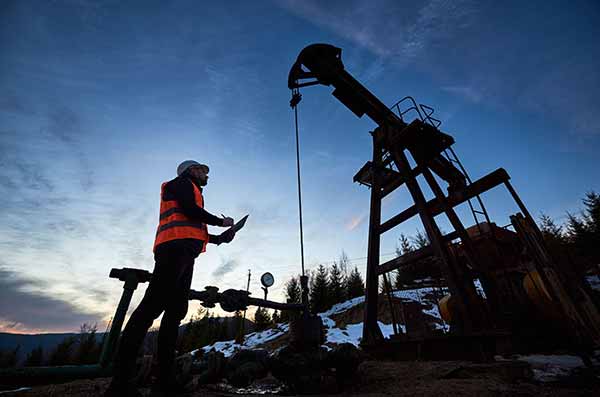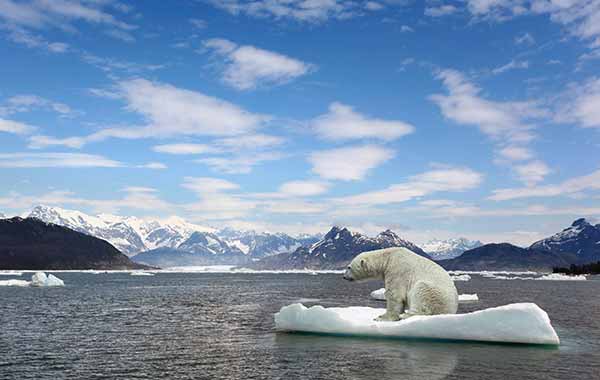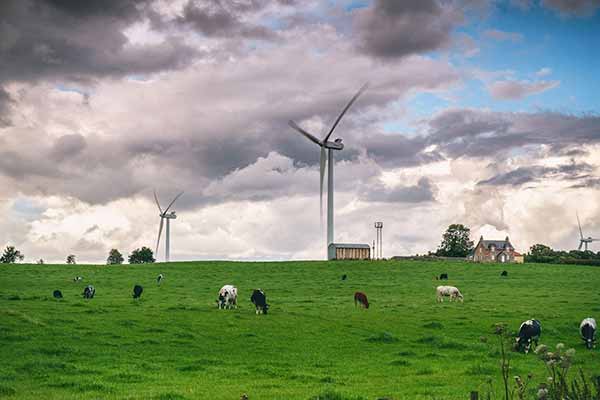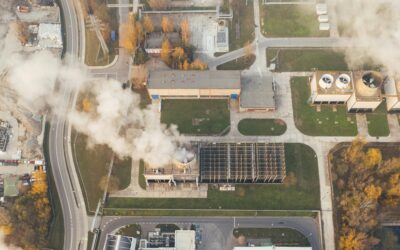As we continue to see the effects of climate change, we have to ask ourselves, “What can be done to slow the rate at which these dramatic changes occur?”
While there are many actions you can take to do your part in the fight against climate change, a great place to start is to educate yourself about the factors that contribute to our changing climate, and no factor plays a larger role than the concentration of greenhouse gases (GHGs) in our atmosphere.
You’ve likely heard that greenhouse gases play a role in global warming and that certain human activities release large quantities of these gases into the atmosphere, increasing global warming. Greenhouse gases, however, are not all bad and have played a role in regulating the global temperature throughout Earth’s history.
Today, we will cover the nature of greenhouse gases so you can understand the role they play in our global climate. We will also go over some of the implications caused by an excessive amount of greenhouse gases released through human activity.
What Are Greenhouse Gases?
Greenhouse gases are what cause the greenhouse effect within Earth’s atmosphere. These gases are responsible for retaining heat here on Earth. Without these gases, the temperature of our planet would drop from its average global temperature of 57°F to just under 0°F.
While greenhouse gases play a role in maintaining a habitable global temperature, human activity has increased these gases’ atmospheric concentration, causing too much heat to become trapped in our atmosphere. The extra heat in our atmosphere leads to increased temperatures around the globe and climate change.
Let’s go over the types of greenhouse gases and how they come about.
What Are the Types of Greenhouse Gases?
The air surrounding Earth primarily consists of the atmospheric gases nitrogen, oxygen, and argon. A mixture of other gases accounts for about 0.041% of the atmosphere, including the greenhouse gases. While this percentage may seem small, these gases play a significant part in the greenhouse effect responsible for regulating Earth’s temperature.
There are six main greenhouse gases:
- Water vapor
- Carbon dioxide
- Methane
- Nitrous oxide
- Ozone
- Synthetic greenhouse gases
Water vapor, carbon dioxide, methane, nitrous oxide, and ozone have natural and anthropogenic (human-driven) causes.
Along with these naturally occurring greenhouse gases, a handful of synthetic gases have been emitted solely due to human activity. Most of these gases are called fluorinated gases and include:
- Perfluorocarbons (PFCs)
- Hydrofluorocarbons (HFCs)
- Chlorofluorocarbons (CFCs)
- Sulfur hexafluoride
- Nitrogen Trifluoride
How Does Human Activity Play a Role in Greenhouse Gas Emissions?
Human activity plays a significant role in releasing greenhouse gases into the atmosphere. The increase of greenhouse gases in the atmosphere has contributed to rising global temperatures.
Water vapor has the highest concentration out of any of the greenhouse gases in our atmosphere. It does not always directly correlate to human activity, and its amounts can vary depending on regional meteorological conditions. However, as the global temperature rises because of increases in other greenhouse gases due to human activity, the atmosphere will become more humid, ultimately contributing to an increasing greenhouse effect.
Carbon dioxide is the greenhouse gas that is most emitted through human activity, accounting for around 75% of human-caused emissions. The burning of fossil fuels, including natural gas, is the primary cause of CO2 emissions.
Methane has more significant warming effects than carbon dioxide but does not remain in the atmosphere as long. It accounts for around 14% of human-caused emissions and is emitted due to agriculture and the decay of organic waste in landfills.
Nitrous oxide has even more significant warming effects than methane does. It accounts for about 8% of human-induced GHG emissions. Nitrous oxide is released due to agricultural and industrial practices.
Ozone is difficult to measure due to the short amount of time it exists in the atmosphere and its substantial differences in concentration around the globe. The ozone near Earth’s surface, called tropospheric ozone, acts as a warming greenhouse gas. It is produced through the burning of fossil fuels, like traffic emissions, and the burning of vegetation.
Fluorinated gases constitute about 1% of greenhouse gases emissions. These gases are a product of industrial practices, including the use of refrigerants, and do not occur naturally. They have greater warming effects per gram than any naturally occurring greenhouse gases.
How Are Greenhouse Gases Produced Naturally?
Water vapor, carbon dioxide, methane, nitrous oxide, and ozone are naturally produced. These gases allow for the greenhouse effect to keep the planet at a suitable temperature for life on Earth.
Water enters the atmosphere in vapor form when it evaporates from bodies of water around the world. As global temperatures increase, more water is evaporated into the atmosphere.
Carbon dioxide exists in the atmosphere as part of the natural carbon cycle. Volcanic activity, gas released from the oceans, decomposing vegetation, and wildfires contribute to carbon dioxide entering the atmosphere. Carbon sinks, like the ocean and rainforests, are responsible for naturally cleaning up the amount of carbon present in the air but are struggling to contend with the dramatic increases in quantity since the Industrial Revolution.
Natural sources of nitrous oxide and methane emissions include releases from wetlands, tundra, the ocean and its sedimentary layers, and soils under natural vegetation.
Ozone is created when high-energy ultraviolet sun rays alter oxygen.
What Is the Greenhouse Effect?
The greenhouse effect is how heat is trapped on the Earth before it can return to space. We receive radiation from the sun in the form of visible light, ultraviolet rays, and infrared radiation. Of these forms of radiation, 70% are absorbed into Earth’s landmasses, oceans, and atmosphere. The rest is reflected into space by light-colored, reflective surfaces like clouds and ice.
As the surfaces of Earth absorb this radiation, they heat up, and some of that heat is then reflected into the atmosphere. As that heat travels through the atmosphere toward space, greenhouse gases absorb the heat radiation, trapping some of it before it can escape into space.
How Do Greenhouse Gases Cause Global Warming?
Greenhouse gases are responsible for global warming because they trap heat that would otherwise escape from the atmosphere. Unlike oxygen and nitrogen, these gases can absorb radiation and hold onto heat.
Greenhouse gases keep Earth at a temperature that can harbor life. If there were no greenhouse gases, the Earth would be much too cold for most life as we know it. On the other hand, if there is too high of a concentration of these gases, the greenhouse effect will run out of control, resulting in a global climate that is much too hot.
Let’s look into the industries and nations that are behind the greenhouse gases that cause global warming.
How Much Are Human Activities Responsible for Greenhouse Gas Concentrations?
Human activities play a big role in greenhouse gas emissions and concentrations. Activities like fossil fuel combustion and deforestation contribute to the amounts of greenhouse gases that remain in the atmosphere.
Carbon dioxide emissions are responsible for the majority of human contribution to greenhouse gas levels. Burning coal, oil, and natural gas emit significant quantities of carbon dioxide. Between the time period of 1970 and 2004, global greenhouse gas emissions increased by 70%, while CO2 emissions increased by 80%.
Land use change, like deforestation, has limited the amount of carbon dioxide removed from the atmosphere by trees. The issue is that the amount of GHG emissions has surpassed the Earth‘s natural ability to absorb the gases from the atmosphere. Now that the emissions increase faster than gases are removed, global temperatures will continue to rise as greenhouse gas concentrations increase.
What Sectors Cause the Most Greenhouse Gas Emissions?
Energy use is the number-one culprit for major greenhouse gas emissions, responsible for 73.2% of all emissions in 2016. Of that percentage, industry, energy use in buildings, and transportation were the most accountable:
- Manufacturing industries: 24.2%
- Energy use in buildings: 17.5%
- Transportation: 16.2%
After energy use comes agriculture, forestry, and land use, responsible for 18.4% of all emissions. Some of the top greenhouse-gas-emitting practices within that percentage were:
- Livestock and manure: 5.8%
- Agricultural soils: 4.1%
- Crop burning: 3.5%
- Deforestation: 2.2%
What Countries Are Responsible for the Most Greenhouse Gas Emissions?
The countries accountable for the most emissions between the years 1850 and 2021 are as follows:
- The United States is responsible for 20% of total emissions globally.
- China is responsible for 11% of that total.
- Russia has contributed 7% of that total.
In more recent years, China has emitted the largest amounts of carbon dioxide. In 2019, China was responsible for 28% of global emissions, and 58% of China’s energy came from coal-burning power plants.
After China comes the United States, responsible for 15% of global emissions in 2019. While the United States has attempted to turn away from coal-burning to generate electricity, the nation is a large producer of crude oil and relies heavily upon fossil fuel use for transportation.
India comes in third, having 7% of the global emissions in 2019. The nation’s emissions come primarily from burning coal for electricity. In 2015, coal burning accounted for 75% of their electricity generation.
How Can We Lower the Concentration of Greenhouse Gases in Our Atmosphere?
To lower the large concentrations of greenhouse gases, the world needs to work together to reduce the amount of greenhouse gas emissions occurring and work toward dropping the amount to net-zero or net-negative. While lowering the emission to zero or below can’t happen overnight, we can continue to take strides in the right direction.
Switching to clean and renewable energy can reduce emissions of greenhouse gases. Individuals can take personal responsibility and make life decisions that will help lower their carbon footprints. Options like carbon offsets can help individuals and businesses. Let’s go over some of these options in more detail.
How Can Renewable and Clean Energy Help?
Renewable energy offers sources of power that can never run out. This type of energy can also have zero emissions, meaning no greenhouse gases are released into the atmosphere. Renewable energy can be generated from solar, wind, hydro, geothermal, and biomass sources.
Clean energy is a zero-emission form of energy, but it is not like renewable energy because it is expendable. An example of this type of energy is nuclear power.
A large-scale switch to renewable and clean energy could drop global emissions and allow the Earth to filter out some of the excess greenhouse gases in the atmosphere.
What Actions Can I Take to Help?
The best thing you can do is educate yourself about emissions and become aware of what actions you can take to participate in greenhouse gas mitigation. You can start by calculating your carbon footprint and then work on reducing the number. This may include:
- Choosing organic and local food
- Eating less meat and other animal products
- Buying used clothing
- Buying from environmentally responsible companies
- Being aware of your power and water usage at home
- Riding your bike or walking over driving
How Can I Use Greenhouse Gas Emission Offsets to Help the Global Climate?
Carbon offsets are a process of carbon dioxide sequestration in which actions are taken, like planting trees, to offset the greenhouse gas emissions. An individual or business can purchase the amount they would like to put toward an offset program to mitigate their effect on greenhouse gas concentrations.
Terrapass provides you with a large selection of carbon offset options that can help you reduce your carbon footprint. Whether you are looking for a personal carbon offset or carbon offsets for your business, Terrapass has what you need to help reduce the amount of greenhouse gas concentrations in our atmosphere.
Greenhouse Gases and the Future
Greenhouse gases are not all bad. After all, they maintain Earth’s temperature to keep it habitable. However, as concentrations of these gases continue to increase, we need to take action to keep them in check to avoid global warming and other negative impacts on our climate system.
Understanding humans’ role in global emissions and other climate impacts is an excellent first step toward curbing this problem we see before us. As we continue to understand how our actions impact our atmosphere, we can learn and move forward into a future where the Earth can resume its natural process of greenhouse gas regulation.
If you want to make a difference today, visit Terrapass, where you can take action to reduce your carbon footprint and continue to educate yourself on new ways to improve the state of our climate.
Brought to you by terrapass.com
Featured image












